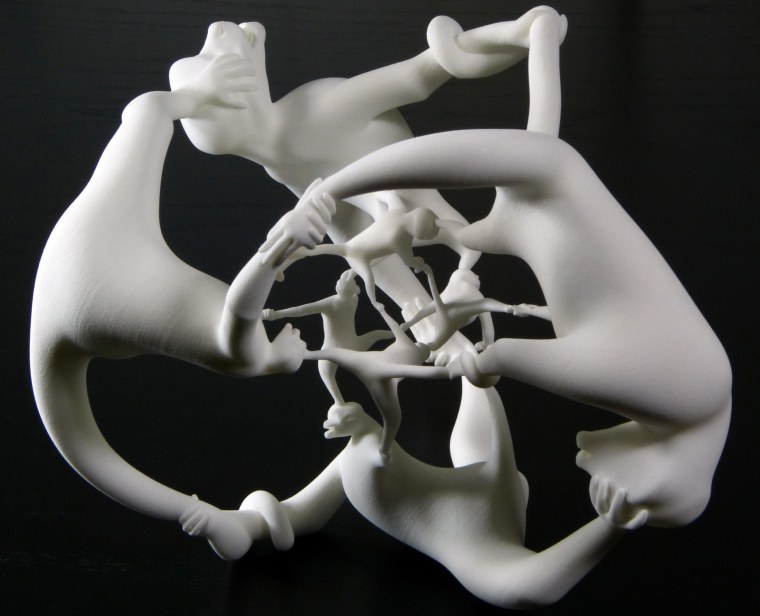It's hard to visualize what four-dimensional objects look like — but Henry Segerman, an artist and mathematician at Oklahoma State University at Stillwater, can show you their three-dimensional shadows.
Segerman uses extradimensional geometry and a 3-D printer to show how objects that exist in four spatial dimensions would look if they were to dip down into our three-dimensional universe. It's an artistic spin-off of "Flatland," the classic parable about extra dimensions.
In Edwin Abbott's book, the two-dimensional denizens of Flatland are flummoxed when a sphere comes to visit: Its 2-D projection looks just like a circle of changing size as it moves through Flatland's permeable plane. Similarly, a 4-D object would look like a morphing 3-D shape as it moved through our realm.
One of the simplest 4-D objects is an analog of the 3-D cube, known as a hypercube or tesseract. Such objects should have eight cubes as "sides" — just as a 3-D cube has six squares as sides, or a 2-D square has four lines as sides. Because our senses are hard-wired for 3-D at best, there's no way to show a hypercube the way it truly is. But Segerman plays with 3-D projections of the hypercube — and even better, sculptures that show the projections of monkeys hooked up in a hypercube shape.
Segerman showed off his sculpture, titled "More Fun Than a Hypercube of Monkeys," this weekend in San Jose, California, at the annual meeting of the American Association for the Advancement of Science. For more about Segerman's hyperdimensional high jinks, check out Emily Conover's report for ScienceShot and Evelyn Lamb's detailed explanation for Scientific American's Roots of Unity blog (with animated GIF, in 2-D).
IN-DEPTH
- Scrunched-Up Dimensions Untangled
- Physicists Probe the Fifth Dimension
- A Gift for Geeks: Six-Dimensional Paperweight
